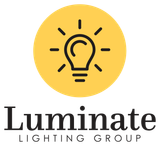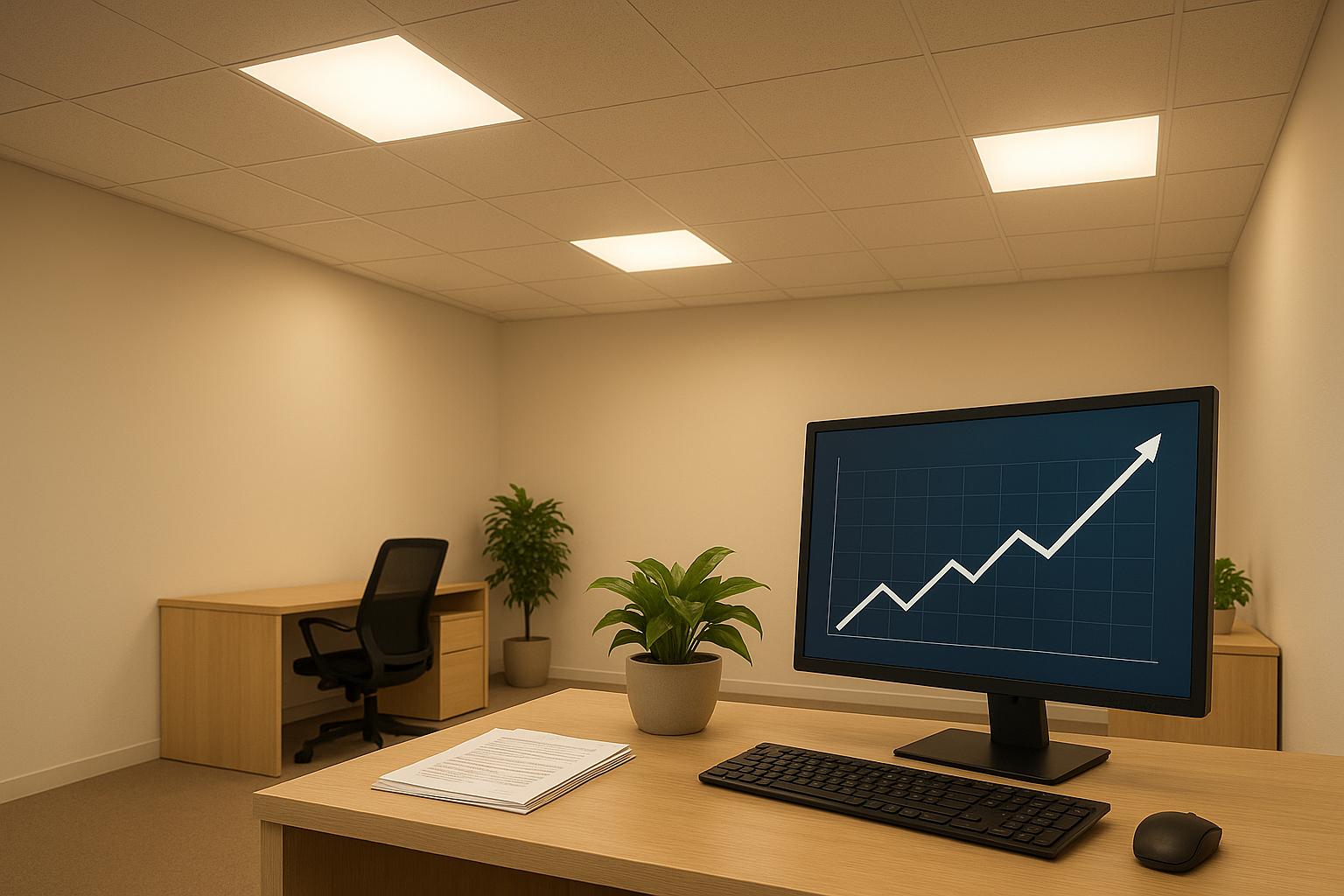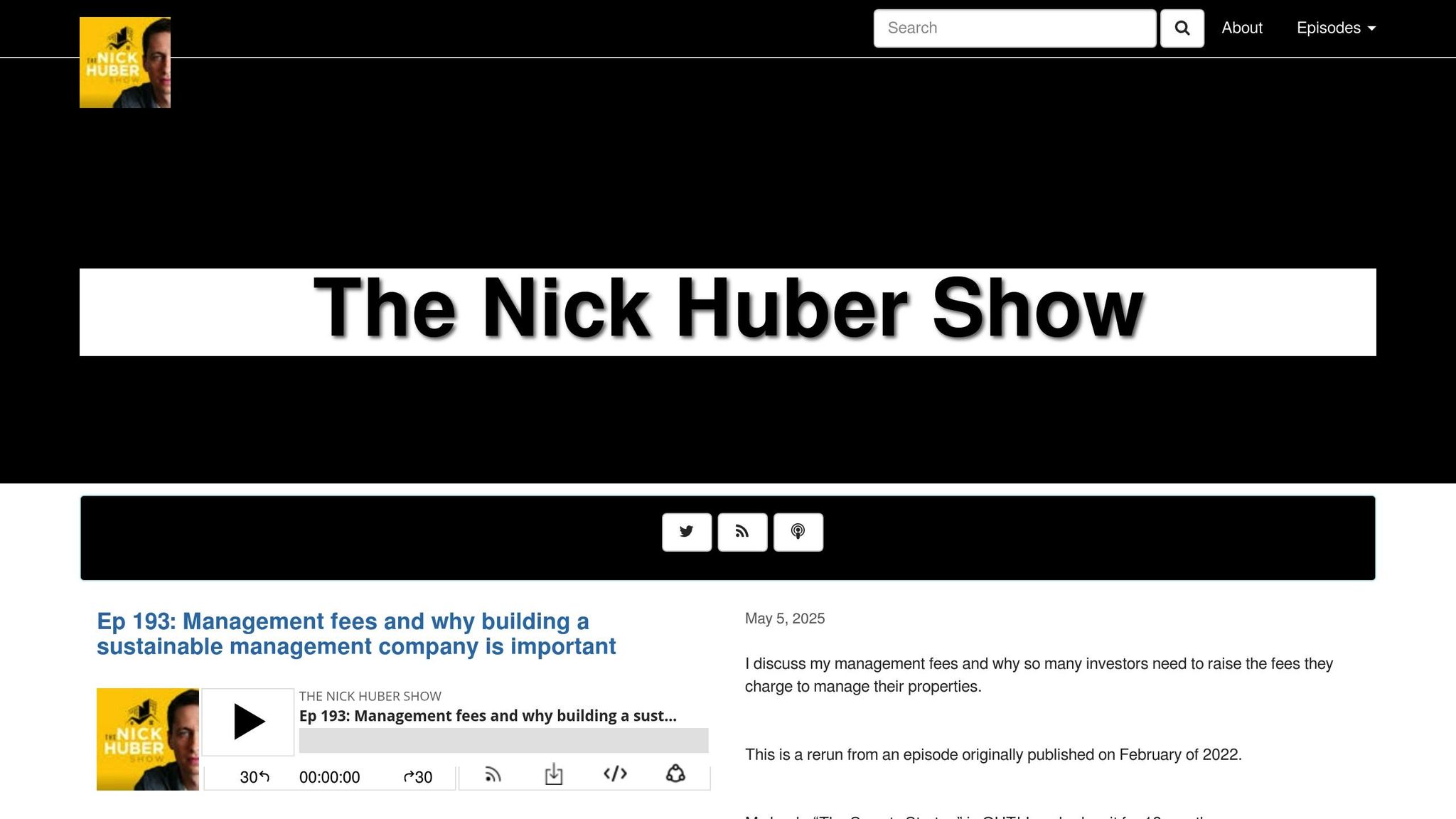Learn how bonus depreciation can significantly reduce the payback period for LED lighting upgrades, maximizing savings and ROI for businesses.


Upgrading to LED lighting can save businesses money faster when paired with bonus depreciation. This tax incentive allows companies to deduct a large portion of project costs in the first year, significantly reducing the payback period - from 4 years to as low as 1.2 years. However, this benefit is phasing out: the deduction rate drops from 40% in 2025 to 20% in 2026, with full expiration after that.
Pairing bonus depreciation with other tax incentives, like the 179D deduction and utility rebates, can further reduce costs and improve ROI. Consulting tax professionals and lighting experts ensures businesses maximize savings before this incentive phases out.
Bonus depreciation allows businesses to deduct most of the cost of qualifying LED lighting upgrades in the same year they’re installed, skipping the lengthy multi-year depreciation schedules. Typically, equipment or building improvements are depreciated over 15 to 39 years. But with bonus depreciation, companies can claim a significant portion of the expense upfront, which boosts cash flow and reduces the initial investment.
LED upgrades can qualify for bonus depreciation as Qualified Improvement Property (QIP) if they meet specific criteria. To qualify, the upgrades must be interior improvements with a lifespan of over one year, and they cannot change the building's structure or expand its space. Common examples of eligible fixtures include recessed, lay-in, and exit lighting, while decorative lighting is excluded.
Normally, most interior lighting falls under a 39-year depreciation schedule as outlined in Section 1250. However, reclassifying such upgrades as QIP reduces the depreciation period to 15 years, making them eligible for bonus depreciation. Proper documentation is essential, so consulting a tax professional can help ensure compliance with IRS rules and avoid potential issues.
Recent changes in tax laws have impacted the benefits of bonus depreciation. Under the Tax Cuts and Jobs Act, assets installed between September 27, 2017, and December 31, 2022, qualified for 100% bonus depreciation. However, for assets installed after 2022, the immediate deduction rate gradually decreases: 80% in 2023, 60% in 2024, 40% in 2025, and 20% in 2026. After 2026, bonus depreciation for QIP is set to expire unless Congress extends the provision.
This phased reduction creates urgency for businesses planning LED upgrades. For example, installing $100,000 worth of LED lighting in 2024 would allow for a $60,000 immediate deduction. Waiting until 2026, however, would reduce that deduction to just $20,000. Additionally, the CARES Act clarified QIP eligibility, ensuring that properly structured LED projects can take full advantage of these tax incentives. These provisions play a key role in shortening the payback period for LED upgrades by lowering upfront costs.
Bonus depreciation allows businesses to write off most of the costs for LED upgrades in the first year. Here's an example: with a corporate tax rate of 27.1%, a $100,000 LED retrofit could yield about $27,100 in first-year tax savings when fully expensed. Compare that to the minimal yearly savings under standard depreciation, and it's clear how this approach improves cash flow and reduces the net cost of the project.
A real-world example brings this to life. In 2020, a client working with Luminate Lighting Group upgraded their lighting to LEDs and claimed an estimated $480,104 in tax benefits by using bonus depreciation alongside other tax strategies. This not only lowered the effective cost of the upgrade but also sped up the internal approval process for the investment.
The accelerated tax savings provided by bonus depreciation directly impact the payback period of an LED retrofit. Typically, energy savings from LED upgrades result in a payback period of around 5–7 years under standard depreciation. However, bonus depreciation significantly shortens this timeframe. Here's a side-by-side comparison for a $100,000 commercial LED retrofit:
| Depreciation Method | Upfront Cost | First-Year Tax Savings | Net Cost After Tax | Payback Period |
|---|---|---|---|---|
| Standard Depreciation | $100,000 | $694 | $99,306 | ~5–7 years |
| Bonus Depreciation (100%) | $100,000 | $27,100 | $72,900 | ~3–4 years |
This table highlights how bonus depreciation reduces the effective cost of the project and compresses the payback period. However, there's a time-sensitive element to consider. Bonus depreciation rates are scheduled to decrease in the coming years - dropping to 60% in 2024 and even lower after that. For businesses looking to take full advantage of these upfront tax deductions, the clock is ticking. Shorter payback periods and immediate tax savings make seizing this opportunity all the more compelling.
When it comes to LED retrofits, bonus depreciation is just one piece of the puzzle. Businesses often combine it with other tax incentives to make their investment even more cost-effective. Here’s a breakdown of some additional benefits that can significantly reduce the overall expense of upgrading to energy-efficient lighting.
The 179D tax deduction allows businesses to deduct up to $0.60 per square foot for energy-efficient lighting and controls. For instance, a 200,000-square-foot warehouse could qualify for a $120,000 tax deduction. This deduction works alongside bonus depreciation, offering another layer of savings.
Utility rebates are another way to cut costs. Local utility companies often provide direct cash incentives, typically ranging from $0.10 to $0.50 per watt of reduced lighting load. These rebates lower upfront costs and improve cash flow, making LED upgrades more affordable.
There’s also the benefit of asset abandonment. When old lighting systems are removed during a retrofit, the remaining net book value of those systems can be written off as a loss in the same year. This deduction complements the depreciation benefits of the new lighting system, adding yet another financial perk.
Lastly, cost segregation studies can accelerate cost recovery. By reclassifying certain upgrade components, businesses can shift them to shorter depreciation schedules - sometimes as short as seven years instead of the standard 39 years. This strategy can make a big difference in recouping costs faster.
When combined, these incentives can significantly lower the first-year costs of LED upgrades. The industry often refers to the "LED Rule of 70," which suggests that businesses can recover about 70% of their LED upgrade costs within the first year. Depending on the project, recovery rates can range from 40% to as high as 110%.
Take a real-world example: a 250,000-square-foot warehouse undergoing a $140,000 LED lighting retrofit. Here’s how the savings could stack up:
| Benefit Type | Amount | Impact |
|---|---|---|
| 179D Deduction | $140,000 (at $0.56/sq ft) | Tax deduction |
| Abandonment Loss | $90,000 | Write-off of old system value |
| Annual Energy Savings | $60,000 | Ongoing operational savings |
| Utility Rebate | Varies by utility | Direct cost reduction |
| Total First-Year Benefits | $290,000+ | Exceeds project cost |
In this scenario, the combined savings result in a payback period of less than a year. However, actual savings will depend on factors like your specific tax situation, local rebate programs, and project details.
It’s worth noting that 100% bonus depreciation is only available for a limited time. Starting in 2023, the rate drops to 80%, followed by 60% in 2024, 40% in 2025, and 20% in 2026. Acting quickly ensures businesses can take full advantage of these benefits before they phase out.
Luminate Lighting Group specializes in navigating this complex web of tax incentives. Their team helps clients secure 179D certification, manage utility rebate applications, and collaborate with tax professionals to maximize savings. With their guidance, businesses can make the most of their LED lighting investments and capture every available benefit.

Maximizing bonus depreciation requires careful planning and expert advice. By adopting a strategic approach, property owners can unlock substantial tax savings and boost their return on investment.
A cost segregation study is a critical step for optimizing bonus depreciation on LED lighting projects. This study breaks down project costs into individual components, identifying which assets qualify for accelerated depreciation or immediate deductions under Qualified Improvement Property (QIP) rules. According to industry data, 10–30% of assets often remain on a 39-year depreciation schedule instead of being allocated to shorter schedules.
For LED retrofits, a cost segregation study can separate expenses for components like lighting fixtures, wiring, controls, and related electrical infrastructure. This detailed breakdown allows property owners to claim accelerated depreciation on eligible items, potentially enabling immediate deductions under current IRS guidelines. The process involves hiring a qualified engineer or specialist to review project plans, invoices, and installation details, ensuring costs are allocated correctly based on IRS rules. For example, interior lighting upgrades in nonresidential buildings typically qualify for bonus depreciation, while decorative lighting that doesn’t serve essential building functions may not.
Collaborating with your accountant and engineering team is essential to ensure accurate classification and compliance with tax laws. The final report provides the documentation needed for tax filings and can deliver significant first-year tax savings. With this detailed asset categorization, working with a tax professional becomes vital to fully capitalize on these deductions.
Navigating the complexities of bonus depreciation for LED retrofits requires expert tax guidance. Tax laws governing bonus depreciation and QIP are intricate and often change. Bonus depreciation rates are currently being phased down, so timing is critical. A knowledgeable tax professional can help you time your deductions to secure the highest possible rate. For instance, completing a project and placing it in service in 2023 allows for an 80% first-year deduction, while delaying until 2024 reduces the rate to 60%. This difference in timing could translate into thousands of dollars in lost tax benefits.
Tax professionals also ensure proper documentation and help avoid errors like asset misclassification, which could lead to audits or denied deductions. It’s important not to rely solely on lighting installers for tax advice, as they may lack the specialized expertise needed to handle complex depreciation rules. Instead, work with a CPA or tax advisor experienced in commercial real estate and bonus depreciation strategies. Your tax professional should collaborate with your lighting contractor and cost segregation specialist to identify and document all eligible components, maximizing your tax benefits while minimizing compliance risks.

Once you’ve secured expert tax advice, partnering with specialized lighting professionals can further enhance your project’s success. Luminate Lighting Group offers the expertise needed to maximize both the operational and tax advantages of your LED lighting upgrade. They begin with a free lighting assessment and energy audit, which identifies energy inefficiencies, catalogs existing fixtures, and calculates potential savings. This analysis helps determine which project components qualify for bonus depreciation. Many of their clients report energy reductions of 50–80% after LED upgrades.
Luminate Lighting Group provides turnkey solutions, handling everything from lighting design and installation to permitting and code compliance. Their comprehensive approach ensures your project meets all requirements for tax incentive eligibility and provides the detailed records your tax professionals need.
Additionally, Luminate Lighting Group assists with utility rebates and other financial incentives. Their expertise in managing complex paperwork and maximizing ROI extends to helping clients combine bonus depreciation with other available programs.
"The Luminate team retrofitted the lighting in a few of our commercial properties and I couldn't be more pleased with the quality of the work, the value they provided and the level of service that they provided. I can definitely recommend their work." - C. Bennett, Building Owner
Their team works closely with your tax professionals to ensure every project detail is documented and classified accurately. This collaboration is key to maximizing depreciation benefits while maintaining IRS compliance.
Bonus depreciation turns LED upgrades into a quick financial win. By allowing an 80% first-year deduction for installations completed in 2023, this tax incentive slashes the usual four-year payback period down to as little as 1.2 years. The "LED Rule of 70" highlights the substantial first-year cost recovery made possible through a combination of tax benefits.
This immediate deduction is just one piece of a larger strategy to accelerate ROI. When paired with other incentives, such as EPAct 179D deductions, utility rebates, and energy savings of 50% to 80%, the financial benefits multiply. In fact, documented cases show that combining these strategies can provide first-year cost recovery of 40% to 110% of the total project cost - sometimes eliminating the payback period entirely. This means LED upgrades can generate positive cash flow right away.
However, timing is critical. The bonus depreciation rate drops from 80% in 2023 to 20% by 2026, making delays costly in terms of lost tax benefits. Acting sooner ensures you capture the maximum financial advantage.
To fully leverage these opportunities, strategic planning and expert coordination are essential. Cost segregation studies help classify assets correctly, while skilled tax professionals navigate the complexities of depreciation rules and optimize deduction timing. Specialized lighting providers like Luminate Lighting Group manage everything from energy audits to rebate documentation, ensuring your project qualifies for the highest tax benefits. Their expertise bridges the gap between technical implementation and financial optimization, turning LED upgrades into a seamless process.
The combination of tax savings, lower energy costs, and enhanced lighting performance makes LED upgrades one of the smartest investments for commercial property owners. With proper planning and expert guidance, bonus depreciation doesn’t just shorten payback periods - it can eliminate them entirely, turning infrastructure upgrades into immediate financial gains.
Businesses looking to benefit from bonus depreciation for LED lighting upgrades should act fast - this incentive is gradually being phased out. Switching to energy-efficient LED lighting can help reduce upfront expenses and speed up the payback period on the investment.
Luminate Lighting Group offers a full range of services to make the process seamless. From custom lighting designs and professional installation to help with rebate submissions, they aim to maximize savings for businesses. They also provide free lighting assessments and energy audits to pinpoint areas for improvement and estimate potential energy savings. Taking action now ensures businesses can take advantage of these financial incentives before they disappear.
To take advantage of bonus depreciation under the Qualified Improvement Property (QIP) rules, LED lighting upgrades need to meet certain conditions. These upgrades must be made to the interior of a non-residential building and must be placed in service after the building's initial use. It's important to note that the improvements cannot involve structural changes, such as expanding the building or altering internal load-bearing walls.
If these criteria are met, businesses can speed up the depreciation of their LED lighting investment. This can lower upfront costs and shorten the timeline for a better return on investment (ROI). Be sure to consult a tax professional to verify eligibility and stay aligned with current tax laws.
When paired with the 179D tax deduction and utility rebates, bonus depreciation can make a big difference in the ROI for LED lighting upgrades. Together, these incentives help cut initial costs, lower taxable income, and speed up the payback period for your investment.
Luminate Lighting Group specializes in helping clients make the most of these opportunities. They identify all qualifying incentives and handle the required paperwork, ensuring you save as much as possible while upgrading to energy-efficient lighting systems designed to meet your specific needs.